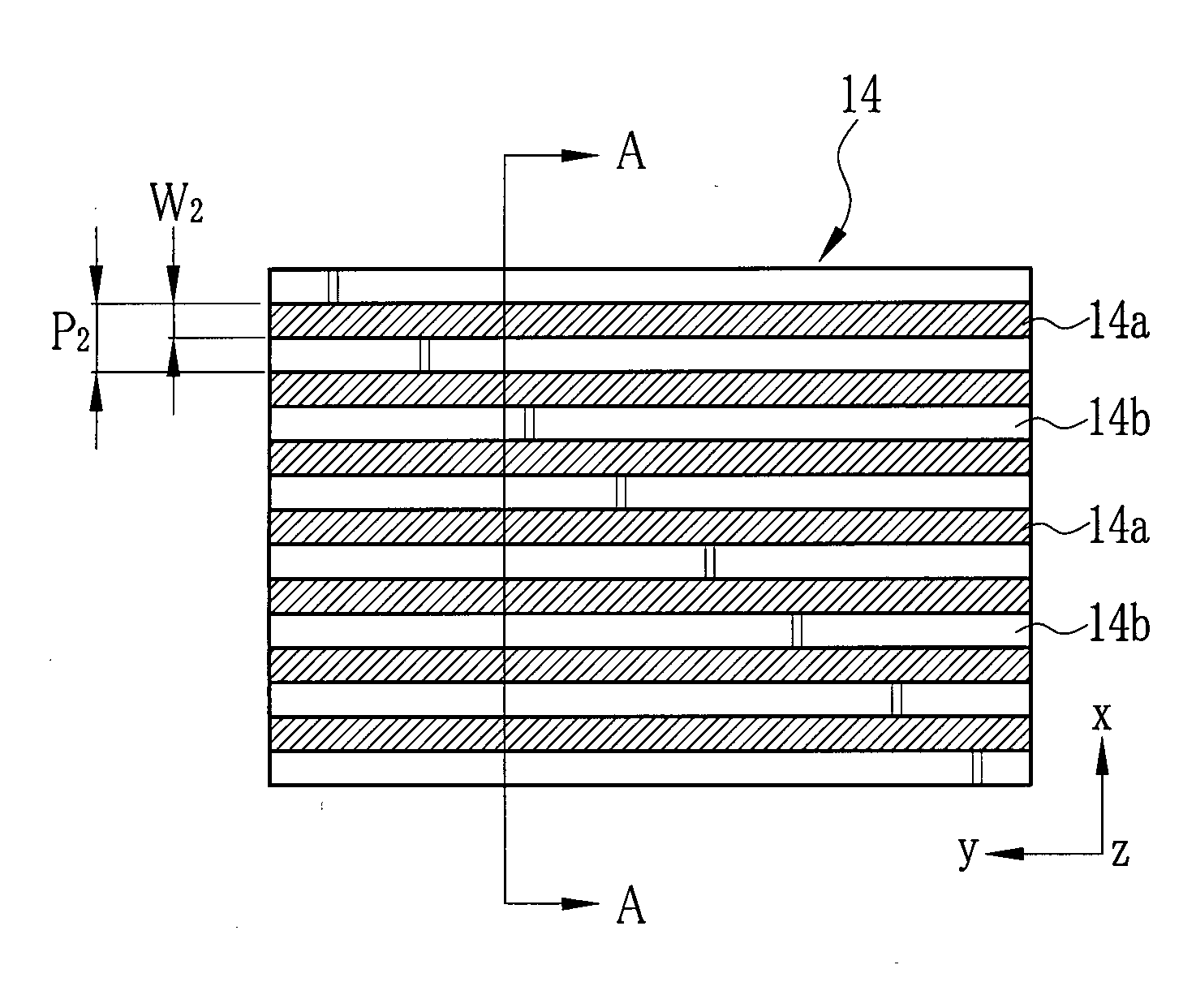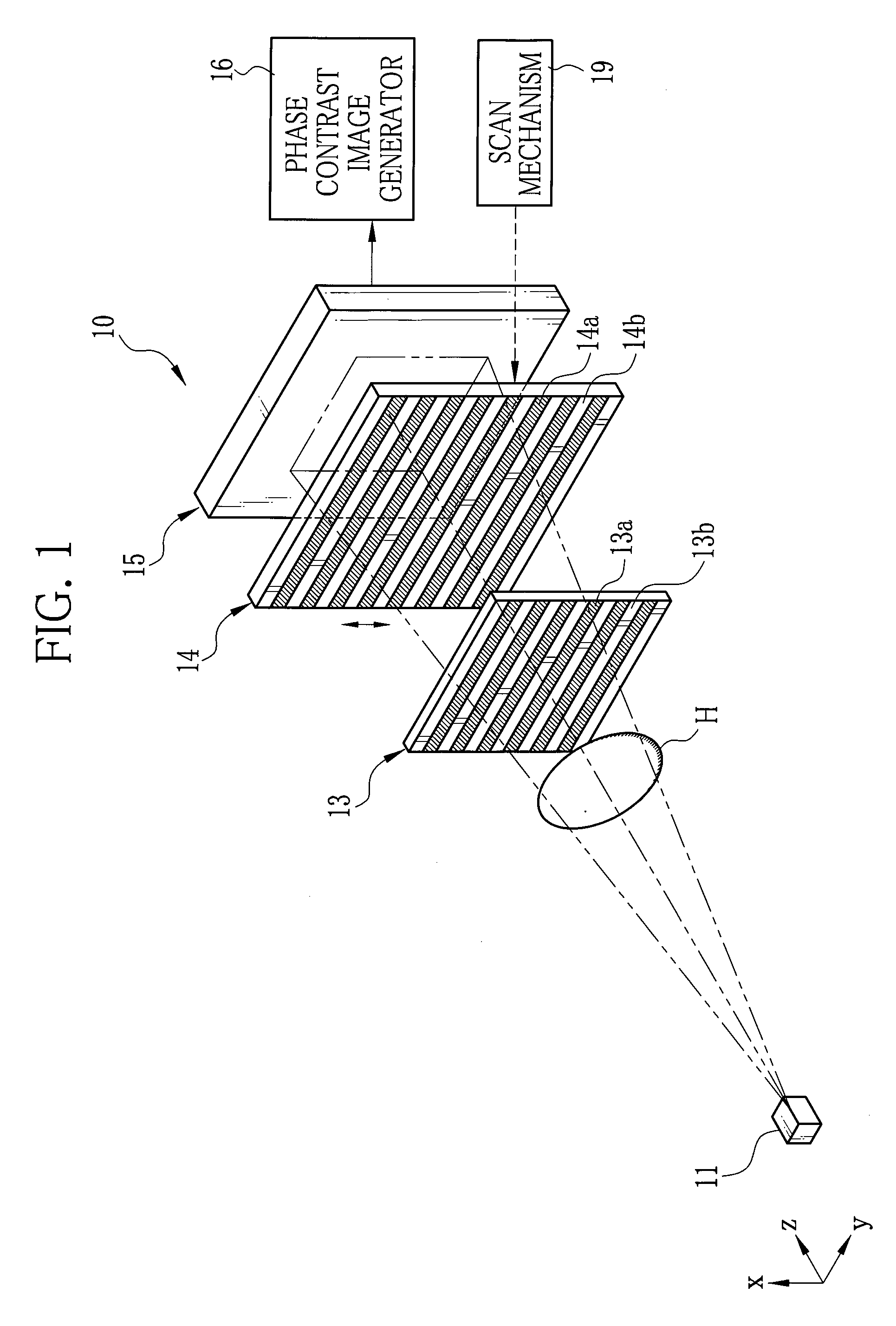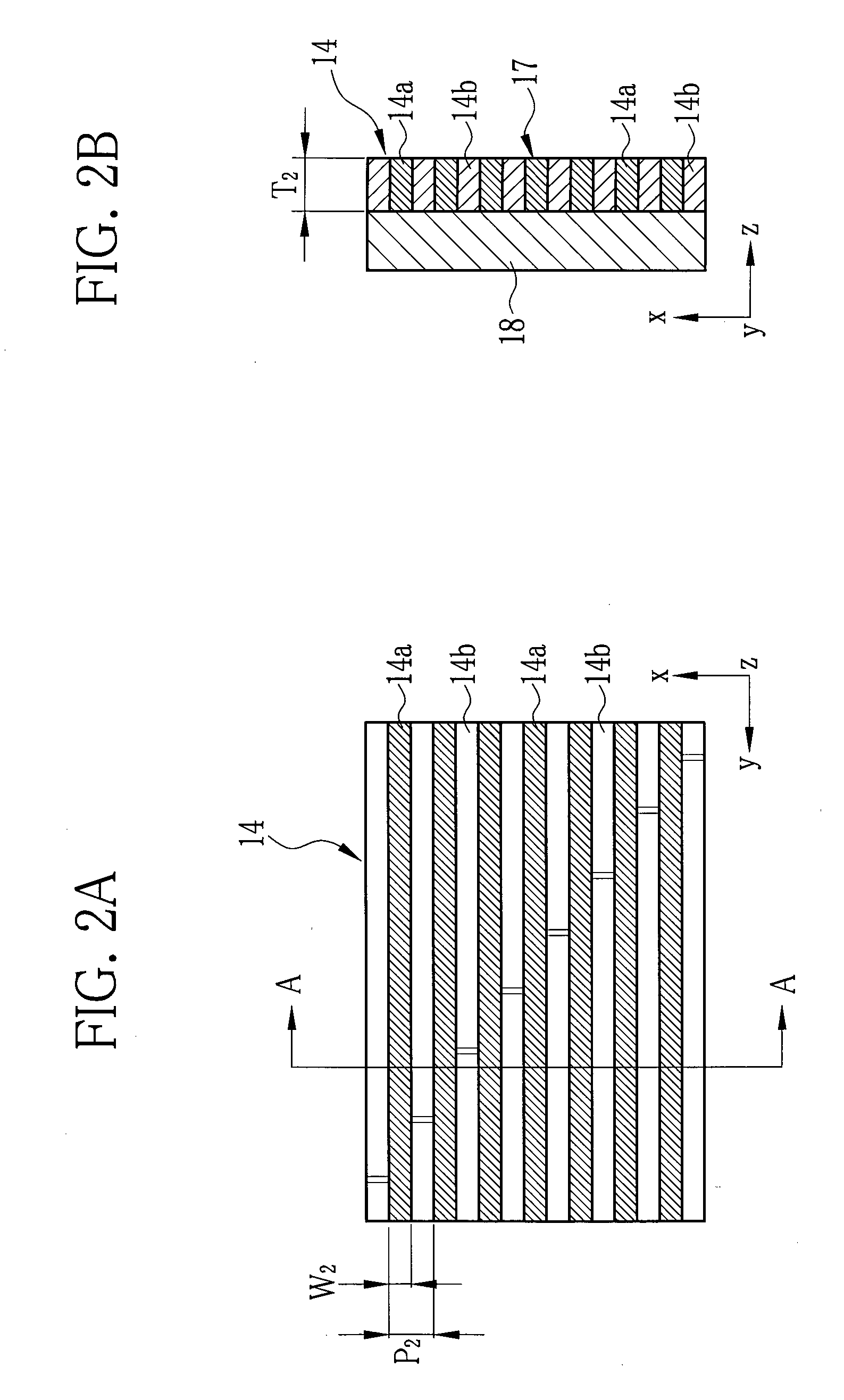Grid for radiation imaging and method for producing the same
- Summary
- Abstract
- Description
- Claims
- Application Information
AI Technical Summary
Benefits of technology
Problems solved by technology
Method used
Image
Examples
first embodiment
[0146]FIG. 1 is a conceptual view showing an X-ray imaging system 10 of a first embodiment. The X-ray imaging system 10 is provided with an X-ray source 11, a first grid 13, a second grid 14, and an X-ray image detector 15. The X-ray source 11 has, for example, a rotating-anode type X-ray tube and a collimator for restricting an X-ray emission field. The X-ray source 11 emits X-ray to an object H. The first grid 13 and the second grid 14 are absorption grids. The first and second grids 13 and 14 are arranged to oppose the X-ray source 11 in a z direction that is a direction of X-ray emission.
[0147]The X-ray source 11 and the first grid 13 are spaced apart enough to place the object H. A distance between the first and second grids 13 and 14 is equal to or less than a minimum Talbot length. The X-ray imaging system 10 of this embodiment does not use the Talbot effect. Instead, the X-ray imaging system 10 projects the X-ray to take a phase contrast image.
[0148]The X-ray image detector ...
second embodiment
[0172]In the first embodiment, the conductive substrate 18 made of a metal plate is used as the support layer for the grid layer 17 and as the seed layer for electroplating. Alternatively, a substrate composed of a plurality of layers may be used as the conductive substrate 18. FIG. 4A is a plan view showing a second grid 30 of this embodiment viewed from the X-ray image detector 15 side. FIG. 4B is a cross-section taken along a line A-A in FIG. 4A.
[0173]The second grid 30 is composed of the grid layer 17, a conductive thin-layer 31, and a support substrate 32. The grid layer 17 is composed of a plurality of the X-ray absorbing sections 14a and a plurality of the X-ray transmitting sections 14b. Each of the conductive thin-layer 31 and the support substrate 32 has X-ray transmission properties which do not interfere with the grid performance of the grid layer 17. The conductive thin-layer 31 is used as the seed layer for the electroplating during the production of the second grid 30...
third embodiment
[0180]In the above embodiments, the grooves 20a are filled with the Au 27 by the electroplating method. Due to the in-plane distribution of the Au in the grooves 20a, however, the grooves 20a may be filled unevenly with the Au 27. To solve this problem, in this embodiment, as shown in a step of FIG. 6G performed after the step of FIG. 5F, the electroplating is performed such that the Au overflows the grooves 20a to cover the entire top face of the etching substrate 20. After the electroplating, as shown in FIG. 6H, the top face of the etching substrate 20 is polished. Thereby, the Au 27 and the etch mask 25 extending out of the grooves 20a are removed.
[0181]In the dry etching using the Bosch process, periodical recesses called scallops appear noticeably on the top face, which increase variations in width dimensions of the grooves 20a. Polishing the top face of the etching substrate 20 eliminates the scallops. The thickness of the etching substrate 20 to be polished to eliminate the ...
PUM
| Property | Measurement | Unit |
|---|---|---|
| Thickness | aaaaa | aaaaa |
| Electrical resistivity | aaaaa | aaaaa |
| Thickness | aaaaa | aaaaa |
Abstract
Description
Claims
Application Information
 Login to View More
Login to View More - R&D
- Intellectual Property
- Life Sciences
- Materials
- Tech Scout
- Unparalleled Data Quality
- Higher Quality Content
- 60% Fewer Hallucinations
Browse by: Latest US Patents, China's latest patents, Technical Efficacy Thesaurus, Application Domain, Technology Topic, Popular Technical Reports.
© 2025 PatSnap. All rights reserved.Legal|Privacy policy|Modern Slavery Act Transparency Statement|Sitemap|About US| Contact US: help@patsnap.com



